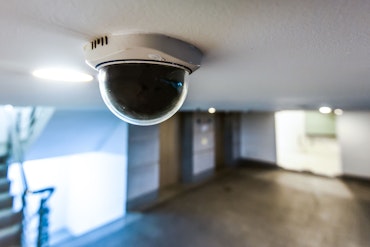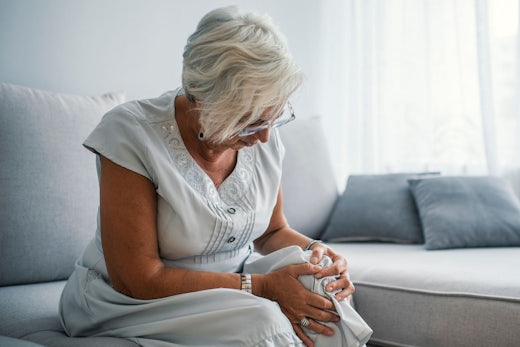ROYAL COMMISSION: Serious risk increase, gaps in home care regulation
There were 3,773 reported assaults in nursing homes across Australia
in 2017/18, the Royal Commission into Aged Care Quality and Safety has
heard – representing over one percent of all residents.

There is a decrease in the number of GPs willing to work or go and see patients in nursing homes (Source: Shutterstock)
Federal Health Department Secretary Glenys Beauchamp gave evidence to the Commission yesterday as hearings entered their second week in Adelaide and says the figures, from a department report, don’t include assaults between residents.
“A reportable assault is where there’s an allegation or suspicions of what is generally known as an assault — physical, mental assaults on either residents or staff,” Ms Beauchamp says.
Ms Beauchamp also confirmed that reporting is not mandatory when residents assault other residents, unless an aged care provider did not respond adequately.
She says the department agrees that all assaults, including those by residents with a “cognitive impairment” should be reported. She says a serious incident response scheme would include resident-on-resident assaults “without exception”, and that it would almost certainly increase the overall number of assaults per year.
“The serious incident response scheme is something that’s being developed at the moment and will require legislative changes,” she says.
Senior counsel assisting Peter Gray also asked Ms Beauchamp to comment on why the number of “serious risk findings” made by the regulator jumped from two in 2015/16, 22 in 2016/17 to 61 in 2017/18.
She says there has been a “heightened level of scrutiny” since the Oakden abuse scandal.
“It probably reflects a number of things,” she says. “Having the failures that occurred like Oakden in the past and the reports and reviews that have been undertaken since, there has certainly been a much greater level of scrutiny by all involved in the care of our older Australians around being more attentive to areas where there may be risk.”
“There has also been legislative changes that have been put in place with the creation of the new commission as well. So there has been a number of reforms, plus also the heightened level of scrutiny and activity levels that have resulted in an increase in serious risks found.”
Drop in GP visits to residential facilities
President of the Royal Australian College of General Practitioners, Dr Harry Nespolon says after building a solid relationship with a family GP over many years, it can be distressing when older people have to see a new GP after moving into residential aged care.
“When a patient moves into a nursing home, if they’re not given the choice, they will often have to see a different GP at a very traumatic time in their lives. I don’t think I’ve ever met a patient that sort of gladly looked forward to going into a residential aged care facility or their relatives, but it is often necessary,” he says.
“As GPs we try to prepare our patients for difficult parts of their lives and this is perhaps one of the most difficult parts of life.”
Dr Nespolon says there is a decline in the number of GPs who are willing to see patients in residential care, citing a large amount of unpaid, after-hours work as a contributing factor. He says spending time out of their practice compromises the amount of care they can give to other patients.
“From my understanding…there is a progressive decrease in the number of GPs who are willing to work or go and see patients in nursing homes. The stated figure is about 30 percent of GPs currently,” he says.
“There is a lot of non-face-to-face work that is involved which there is no rebate for. What you don’t see is the time out of practice. A lot of these consultations are done out of hours because it’s the only way it makes any economic sense because if you leave your practice during the day you’re not seeing patients that you would normally see.”
“The GP becomes the default for all the inefficiencies of the system, whatever needs to be done…and they really can’t just say, “Well, I’m not going to do it” because the patient needs that care.”
Dr Nespolon adds that “it’s not just about the money” and billable hours.
“As one of my colleagues says who stopped going to nursing homes, “I felt that I had abandoned my patients,’” he says.
“It’s about that relationship which may have been going on for many decades and now is lost because of the economics of the situation. The opportunity should be there for both that patient and (their) doctor to continue that relationship all the way through to their final resting place.”
Home care regulation high on the priority list
Aged Care Quality and Safety Commissioner Janet Anderson also gave evidence yesterday, saying the Oakden tragedy was a “sentinel event” and “sent shock waves through the sector.”
“It was a wake-up call and a number of things flowed from that, 25 including some self-reflection by the regulators who existed then about their own practice,” she says.
Ms Anderson also highlighted potential gaps in regulating home care services, saying there is “less visibility”.
“Home care recipients are a very dispersed population by definition… it’s much more difficult to observe the care being delivered,” she says.
“I think there may be risks attached to that, that a provider going into a home is less visible…and we are probably more reliant on the care recipient and their family to bring to attention instances of poor care or underservicing.
”The financial risks are present. There’s no doubt about that. And with the packaging arrangements there is scope for misinterpretation, both by the consumer and the provider of care.”
Ms Anderson says as more Australians decide to stay in their home for longer, regulations need to be in place to support the ageing population in accessing safe services.
“We are aware that the way in which we regulate home care provision is not as strong, either as it is for residential care or that it needs to be. It’s work which the department has been undertaking for a while and we have been contributing to that,” she says.
“At the moment I’m not convinced that our regulatory gaze in home care is as strong as it needs to be.”
Ms Anderson says it’s “too early to say” what initiatives the department could put in place to solve these issues, saying it’s an important piece of work “on the priority list”.
The hearings continue today, with representatives from Leading Age Services Australia, Dementia Australia, Aged and Community Services Australia, and Catholic Health Australia to give evidence.











![The new Aged Care Act exposure draft is slated for release in December of 2023, but advocates hope to see it rolled out on January 1, 2024. [Source: Shutterstock]](https://agedcareguide-assets.imgix.net/news/articles/wp/agedcareact__0811.jpg?fm=pjpg&w=520&format=auto&q=65)












Comments